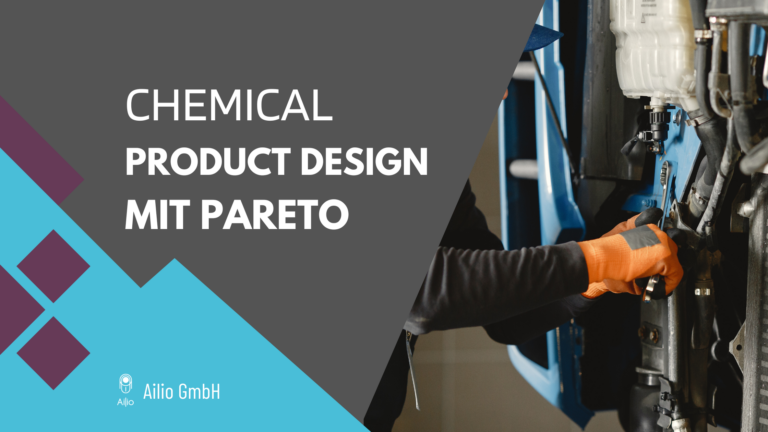In the chemical industry, the development of new products is at the heart of technological progress. A key method in this area is Chemical Product Design (CPD), a process in which new chemical products are developed from the molecular level through to market launch. A particularly effective technique in this process is Pareto optimization, an approach that helps to make the best possible decisions among several competing goals.
Basics of Chemical Product Design
CPD is about developing chemical products in such a way that they have certain desired properties. This includes the selection of suitable molecules, the formulation of the product, the production process and the analysis of the environmental impact. CPD is a complex process as there are often many competing objectives, such as cost, performance, safety and environmental impact.
The role of Pareto optimization
Pareto optimization is a concept from the field of operations research and is used to make optimal decisions in an environment with multiple objectives. In terms of CPD, this method helps to find a compromise between different, often conflicting objectives.
Key concepts:
- Pareto front: A collection of points that represent where trade-offs can be made between competing goals.
- Multi-objective optimization: Simultaneous optimization of multiple objectives, resulting in a series of optimal solutions, not just a single solution.
Application of Pareto optimization in CPD
In practice, Pareto optimization is used in CPD to find a balance between different product characteristics and requirements. For example:
- Development of environmentally friendly products: Optimizing product formulation to minimize environmental impact while maintaining performance.
- Cost reduction: Finding the most cost-efficient raw materials and production methods without compromising quality.
- Performance improvement: Maximizing product performance while meeting safety and environmental standards.
Case studies and practical examples
Real-life examples of the application of Pareto optimization in CPD are becoming increasingly common in industry. Companies use this approach to develop innovative, sustainable and cost-efficient chemical products.






